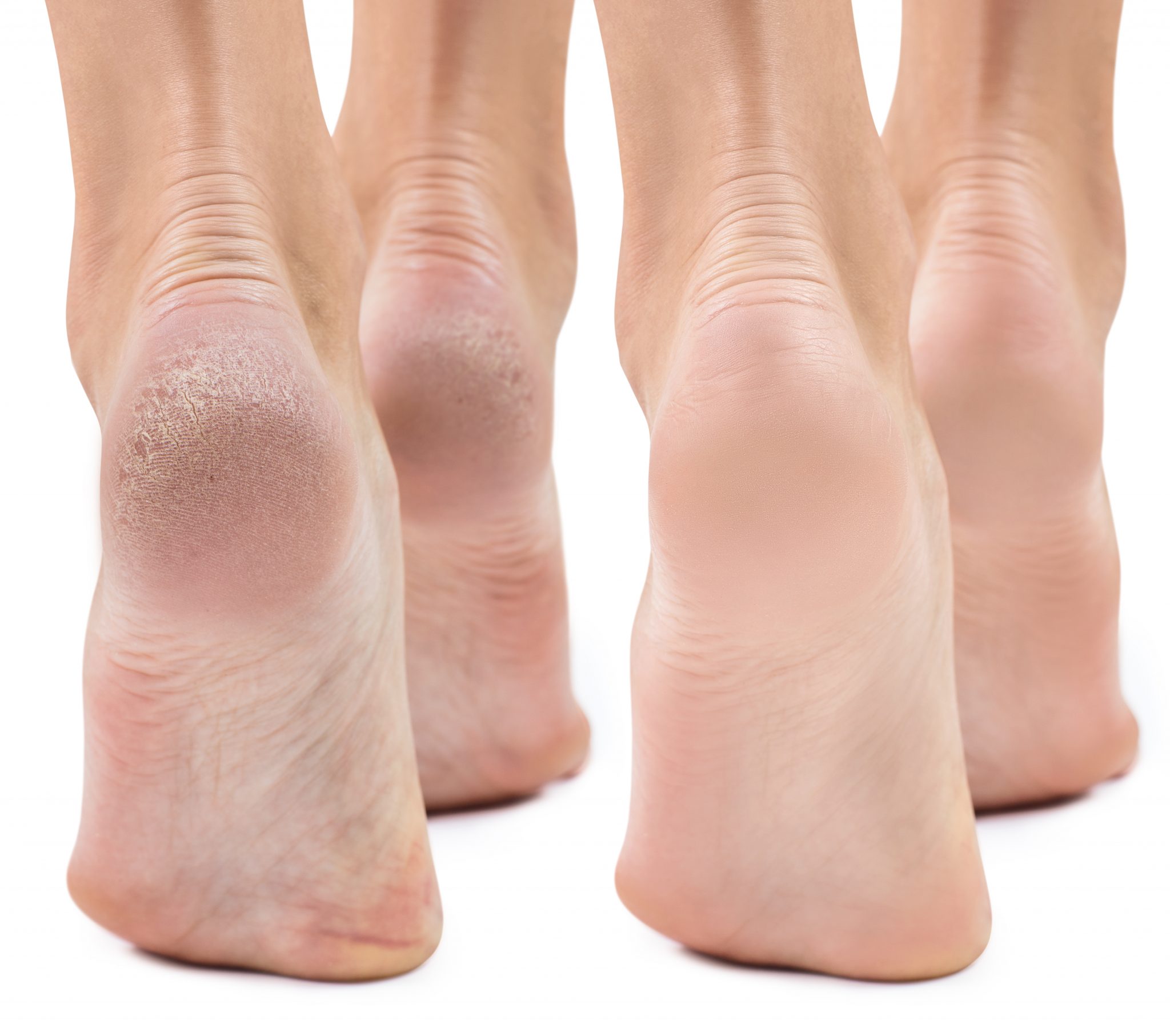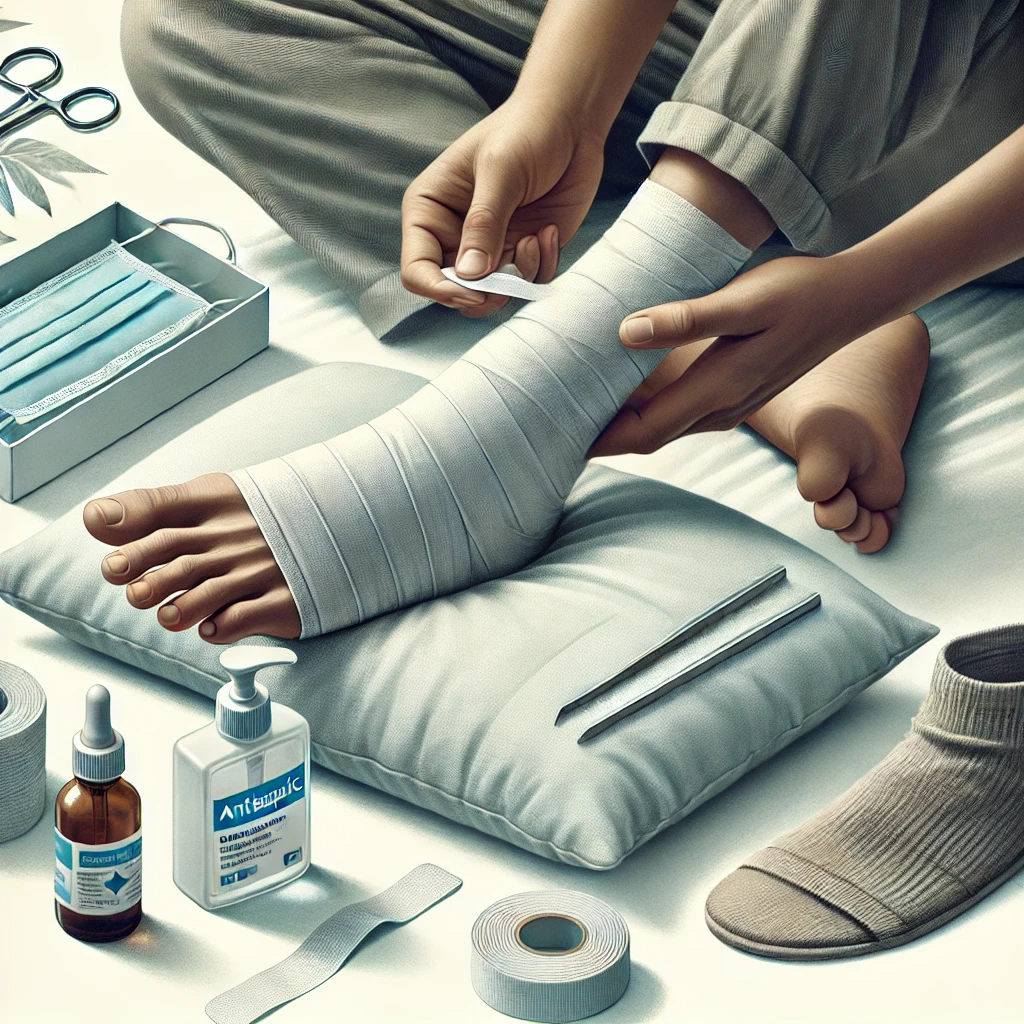
Cracked Heels
You’ll know the causes behind it, symptoms and treatment, results of the negligence, the way to prevent and the role of orthotic inserts
Let’s Look Into:
What Are Cracked Heels?
- Cracked heels, a prevalent foot issue, emerge when the thick, dry skin at the base of your heels develops splits and fissures.
- While initially a cosmetic concern, minor cracks can evolve into painful conditions if left unattended, potentially leading to discomfort while walking and susceptibility to infections as the fissures deepen.
What Causes Cracked Heels:
Cracked heels can be caused by a variety of factors, and certain risk factors can increase the likelihood of developing this condition.

Here are some common causes and risk factors:
- Dry Skin:
- Lack of moisture in the skin, often exacerbated by factors such as dry climate, low humidity, or excessive hot showers/baths.
- Pressure and Friction:
- Standing for prolonged periods, walking barefoot, or wearing shoes that don’t provide proper support can increase pressure and friction on the heels, leading to cracks.
- Obesity:
- Excess weight can put added pressure on the heels, making them more prone to cracking.
- Improper Footwear:
- Wearing open-back shoes, sandals, or shoes with thin soles can contribute to the development of cracked heels as they provide inadequate support and protection for the heels.
- Aging:
- As people age, the skin tends to lose its elasticity and natural oils, making it more prone to dryness and cracking.
- Medical Conditions:
- Certain medical conditions like diabetes, thyroid disorders, eczema, psoriasis, and athlete’s foot can increase the risk of cracked heels.
- Nutritional Deficiencies:
- Insufficient intake of essential nutrients such as vitamins A, C, E, and minerals like zinc and omega-3 fatty acids can lead to dry, cracked skin.
- Hygiene:
- Poor foot hygiene, such as infrequent moisturizing, not exfoliating regularly, or not wearing clean socks, can contribute to the development of cracked heels.
- Frequent Standing or Walking:
- Occupations or activities that require prolonged periods of standing or walking can increase the pressure on the heels, making them more susceptible to cracking.
- Harsh Chemicals:
- Exposure to harsh chemicals present in soaps, detergents, or foot care products can strip the skin of its natural oils, leading to dryness and cracking.
The Symptoms Of Cracked Heels:
Cracks
Dryness
Redness or Inflammation
Itching or Peeling

- Visible Cracks:
- Cracks or fissures in the skin of the heels are the most apparent symptom. These cracks can range from superficial to deep and may be accompanied by flaky or peeling skin.
- Dryness and Thickened Skin:
- The skin on the heels may appear dry, rough, and thickened, especially around the edges where the cracks are present.
- Pain or Discomfort:
- Cracked heels can cause pain or discomfort, particularly when walking, standing, or putting pressure on the affected area.
- In some cases, the cracks may bleed or become infected, leading to increased pain.
- Redness or Inflammation:
- The skin surrounding the cracks may appear red, inflamed, or irritated, especially if the cracks are deep or if there is an underlying infection.
- Itching or Peeling:
- Some individuals with cracked heels may experience itching or peeling of the skin, particularly if the cracks are associated with conditions like athlete’s foot or eczema.
- Difficulty Walking:
- Severe cases of cracked heels can make it difficult to walk comfortably, affecting mobility and overall quality of life.
- Open Sores or Infection:
- If left untreated, cracked heels can worsen and lead to open sores or wounds, increasing the risk of infection.
- Signs of infection may include pus, increased pain, swelling, warmth, or fever.
Treatment:

Preparation Before An Appointment:
Before an appointment with a doctor or podiatrist for cracked heels, it’s helpful to prepare by taking some steps to manage the condition and gather relevant information.
Here’s what you can do:
- Keep a Record: Note down any symptoms you’re experiencing, including when they started and whether they have worsened or improved over time. Also, mention any treatments or home remedies you’ve tried and their effectiveness.
- List Medications and Supplements: Make a list of any medications, supplements, or topical creams you’re currently using, as these can sometimes affect skin health and may influence the doctor’s recommendations.
- Wear Open Shoes: If possible, wear open shoes or sandals to the appointment to allow the doctor to examine your heels more easily. Avoid wearing tight-fitting or closed shoes that may aggravate the condition.
- Avoid Self-Treatment: While it’s tempting to try various home remedies, refrain from using harsh chemicals or sharp objects to remove dead skin or widen the cracks. This can increase the risk of infection and complicate treatment.
A Doctor May Advise:
When you visit the doctor, they may advise the following treatments based on the severity of your cracked heels:
- Prescription Creams or Ointments:
- If over-the-counter moisturizers are not effective, your doctor may prescribe stronger creams or ointments containing urea, salicylic acid, or corticosteroids to soften the skin and promote healing.
- Debridement:
- In severe cases where there is a thick buildup of dead skin, the doctor may perform debridement to remove the excess skin using a scalpel or other medical instruments.
- Customized Footwear:
- If your cracked heels are due to biomechanical issues or improper footwear, your doctor may recommend custom orthotic inserts or shoes with proper support to alleviate pressure on the heels.
- Medical Procedures:
- In rare cases of deep or persistent cracks, medical procedures such as laser therapy or surgery may be necessary to promote healing and prevent recurrence.
Home Remedies:
There are several home remedies you can try to manage cracked heels:
- Regular Moisturizing:
- Apply a thick moisturizing cream or petroleum jelly to your heels twice daily, especially after bathing or soaking your feet.
- Exfoliation:
- Gently exfoliate your heels using a pumice stone or foot scrub to remove dead skin. Do this regularly, but avoid excessive scrubbing, which can irritate.
- Soaking:
- Soak your feet in warm water for 10-15 minutes to soften the skin before gently exfoliating or moisturizing.
- You can add ingredients like Epsom salt, apple cider vinegar, or essential oils to the foot soak for added benefits.
- Wear Socks:
- Wear clean, cotton socks to bed after applying moisturizer to your heels.
- This helps lock in moisture and prevents friction while you sleep.
- Stay Hydrated:
- Drink plenty of water to keep your body hydrated, which can help maintain skin elasticity and prevent dryness.
- Healthy Diet:
- Eat a balanced diet rich in vitamins and minerals, particularly those essential for skin health, such as vitamins A, C, and E, and zinc.
- Avoid Harsh Chemicals:
- Limit exposure to harsh soaps, detergents, or skincare products that can strip the skin of its natural oils and exacerbate dryness.
What Can Happen If You Ignore Cracked Heels?
Ignoring cracked heels can lead to several potential complications and negative consequences:
Pain and Discomfort:
- Cracked heels can cause pain and discomfort, especially when walking or standing for long periods.
- Ignoring the issue may result in worsening pain and difficulty performing everyday activities.
Bleeding and Infection:
- Deep cracks in the skin can bleed, increasing the risk of infection.
- Bacteria can enter the cracks, leading to cellulitis or other skin infections.
- In severe cases, untreated infections may spread to deeper tissues or the bloodstream, posing a serious health risk.
Chronic Skin Issues:
- Ignored cracked heels may lead to chronic skin conditions such as eczema or psoriasis, which can cause inflammation, itching, and further skin damage.
Delayed Healing:
- Without proper care and treatment, cracked heels may take longer to heal.
- Delayed healing can prolong discomfort and increase the risk of complications.
Changes in Gait:
- Painful cracked heels can alter your gait or walking pattern, leading to additional strain on other parts of the feet, ankles, knees, hips, and back.
- This may increase the risk of developing musculoskeletal problems or injuries over time.
Reduced Mobility:
- Severe cases of cracked heels may limit mobility and affect your ability to engage in physical activities or perform daily tasks comfortably.
Psychological Impact:
- Chronic foot problems like cracked heels can negatively impact self-esteem and quality of life.
- Discomfort, pain, and visible skin issues may cause embarrassment or self-consciousness, affecting social interactions and overall well-being.
Complications for People with Diabetes:
- Individuals with diabetes are particularly vulnerable to foot problems like cracked heels due to poor circulation and nerve damage.
- Ignoring cracked heels can lead to diabetic foot ulcers, infections, and even serious complications like foot amputation in severe cases.
10 Preventive Measures:
- Moisturize Regularly:
- Apply a thick moisturizing cream or petroleum jelly to your heels daily, especially after bathing or soaking your feet.
- Choose products containing emollients like urea or shea butter to help soften and hydrate the skin.
- Exfoliate Gently:
- Regularly exfoliate your heels to remove dead skin buildup and prevent thickening.
- Use a pumice stone, foot scrub, or exfoliating foot mask to gently slough off dead skin cells, but avoid excessive scrubbing, which can cause irritation.
- Stay Hydrated:
- Drink plenty of water to keep your body hydrated, which helps maintain skin elasticity and prevent dryness.
- Wear Supportive Footwear:
- Choose shoes with proper support, cushioning, and a snug fit to prevent excessive pressure and friction on the heels.
- Avoid open-back shoes or sandals that expose the heels to friction and dry air.
- Use Inserts or Orthotics:
- Consider using cushioned shoe inserts or custom orthotic devices to provide additional support and reduce pressure on the heels, especially if you spend long hours standing or walking.
- Avoid Prolonged Standing:
- Take regular breaks if your job or daily activities require prolonged standing to reduce pressure on your heels.
- Protect Your Feet:
- Wear socks or slippers when walking on hard or rough surfaces to minimize friction and protect the skin on your heels.
- Maintain Good Foot Hygiene:
- Wash your feet daily with mild soap and warm water, paying special attention to the heels.
- Gently pat your feet dry and avoid rubbing vigorously, as this can further dry out the skin.
- Limit Exposure to Harsh Chemicals:
- Use mild soaps, detergents, and skincare products to avoid stripping the skin of its natural oils.
- Avoid using harsh chemicals or hot water on your feet, as they can contribute to dryness and irritation.
- Regular Foot Checks:
- Inspect your feet regularly for any signs of dryness, cracking, or other abnormalities.
- Promptly address any issues and seek medical attention if you notice signs of infection or if you have diabetes or other medical conditions that affect foot health.
Do You Need Orthotic Inserts For It?
Orthotic inserts can be beneficial for some people with cracked heels, particularly if the condition is related to issues such as overpronation (excessive inward rolling of the foot), high arches, or improper weight distribution.
Here are some scenarios where orthotic inserts may be helpful:
Biomechanical Issues:
- If your cracked heels are associated with biomechanical issues such as overpronation or supination (excessive outward rolling of the foot), orthotic inserts can help correct foot alignment and redistribute pressure more evenly across the foot.
- This can reduce strain on the heels and prevent excessive pressure that may contribute to cracking.
Supportive Footwear:
- Orthotic inserts can provide additional support and cushioning in your shoes, which can help reduce pressure and friction on the heels.
- They can also improve shock absorption, particularly if you spend long hours standing or walking on hard surfaces.
Customized Support:
- Custom orthotic inserts, which are tailored to your individual foot shape and biomechanics, can address specific issues and provide optimal support and comfort.
- A podiatrist or orthopedic specialist can assess your foot structure and gait pattern to determine whether custom orthotics are necessary.
Prevention of Recurrence:
- If you’ve experienced recurrent or chronic issues with cracked heels, orthotic inserts may help prevent recurrence by addressing underlying biomechanical problems and providing ongoing support and protection for your feet.
However, not everyone with cracked heels will require orthotic inserts. For someone, proper footwear, regular moisturizing, and other preventive measures may be sufficient to manage the condition effectively. It’s essential to consult with a healthcare professional, such as a podiatrist or orthopedic specialist, for a comprehensive evaluation of your foot health and personalized recommendations.
Some Available Orthotic Inserts
Related Articles:














Your point of view caught my eye and was very interesting. Thanks. I have a question for you.
Your article helped me a lot, is there any more related content? Thanks!
An intriguing discussion is worth comment. I do
believe that you should write more on this topic,
it may not be a taboo subject but typically
people do not discuss such issues. To the next! Kind regards!!
Your article helped me a lot, is there any more related content? Thanks!